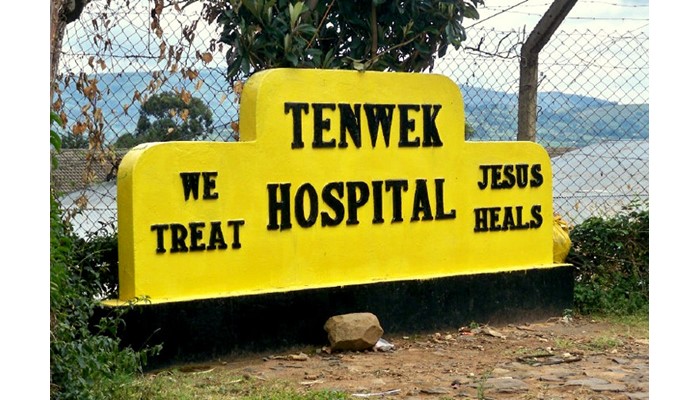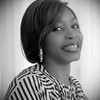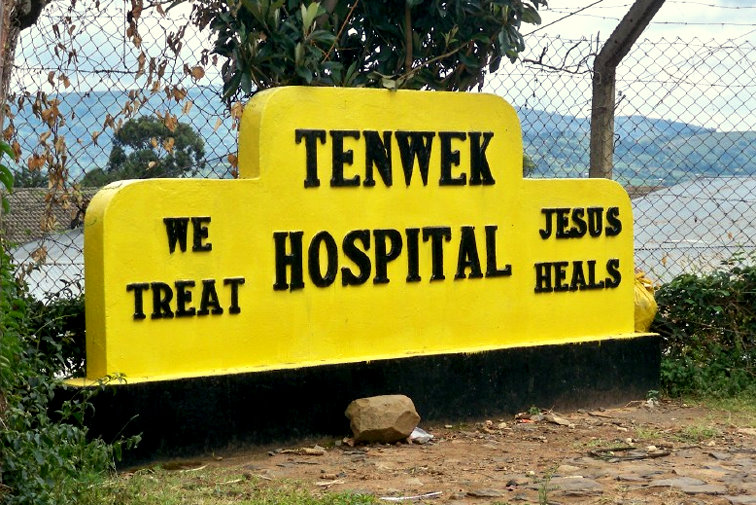
One thing I have long struggled with is the intersection of faith and science. As a scientifically-minded individual and a medical practitioner, it is often difficult to entertain the idea of a non-scientific explanation, to allow for things outside my world of reason and sensory observation. As a Christian, I struggle to understand the roles of prayer and miracles. To what extent should we pray for miracles or healing? While I believe God is capable of miraculous healing, I have not really seen such things in my life. Then I wonder if perhaps we don’t see them because we don’t need them. Have we become so self-sufficient and self-reliant that we have relegated the need for God to a small corner of our lives?
The struggle to reconcile these things is even more present here in Kenya. Here, faith and the supernatural are deeply ingrained parts of life and affect all aspects of it. For Christians here, there is a deep daily need for reliance on God. To explain how deeply it affects everything would be outside the scope of this writing. Yet, in the hospital, where the fragile balance of life is constantly threatened, for the Kenyan Christian, there is the strong belief that nothing happens outside of the will of God, that God can and does heal, and that prayer can bring about healing.
I was on call a Thursday in September. We had just finished up our outpatient clinic and I was getting ready to head home. Our medical superintendent found me just as I was headed down the hill. He told me that he had received word from a small hospital about an hour away from here that one of our staff members had been injured and the hospital wanted to transfer him to us. It sounded bad. He had been injured while riding a boda boda, a small motorbike that is a backbone of the transportation system here. Unfortunately, we see far too many accidents and injuries related to them.
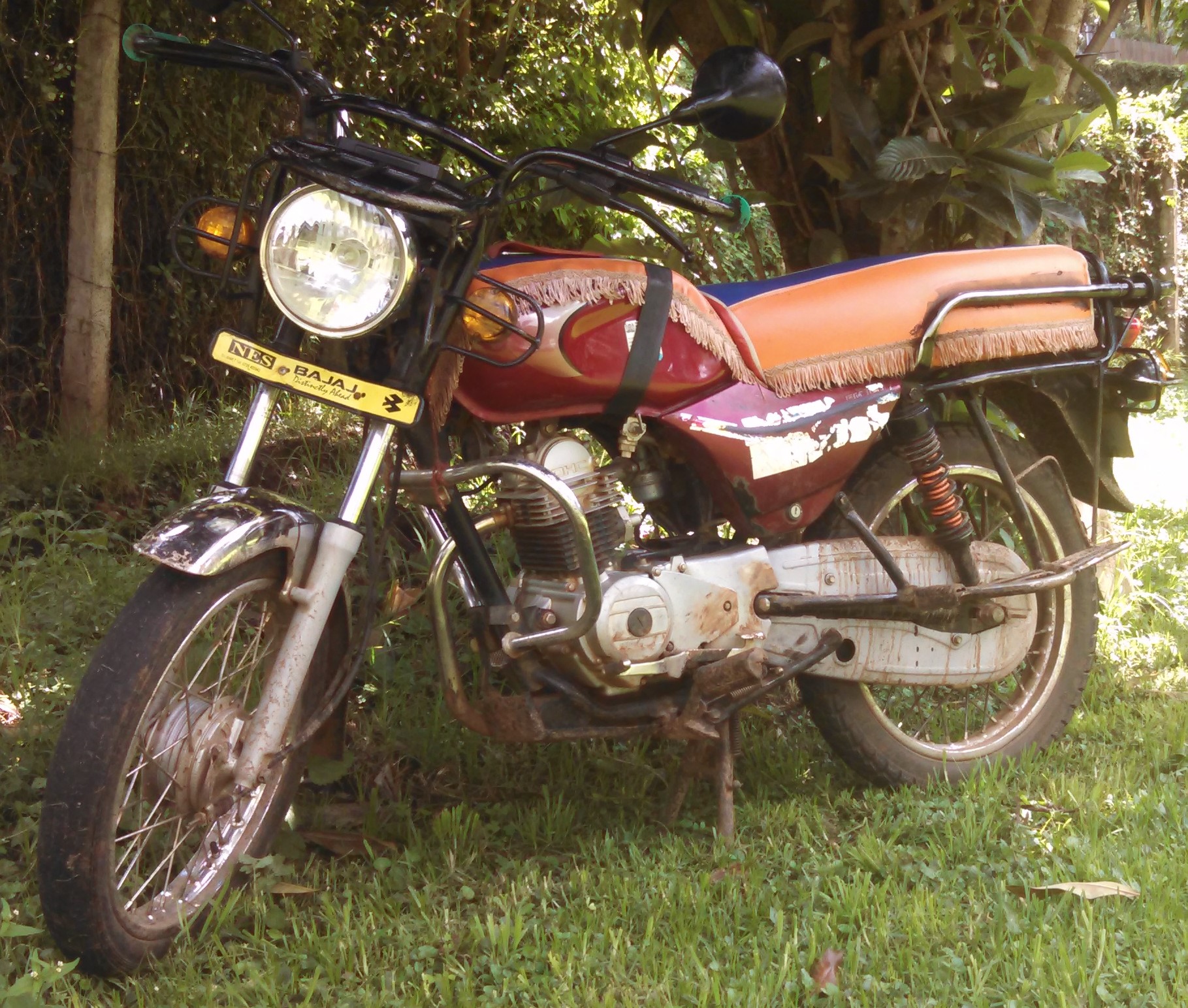
We sent one of our surgical chief residents with the ambulance to pick him up. Here, an ambulance is really simply a transport system; little medical care occurs during the transfer. So, they simply went to the hospital, picked him up and brought him back.
When Andrew arrived to casualty (ER), things indeed looked grim. While the fact that he had survived long enough to make it to Tenwek meant he likely didn’t have any immediately life-threatening injury, his initial assessment was not reassuring. He clearly had suffered a head injury as evidenced by a large defect over the right part of his head. Andrew was not responsive. In traumas, we have a way of evaluating an injured person’s degree of responsiveness or level of consciousness. This helps to measure how severe a head injury is and even helps us assess outcomes and the likelihood of survival. In this scoring system, 15 is the high score, meaning a normal level of consciousness. The low score is 3 and indicates no eye opening, movement or verbal response to pain. A score of less than 8 is considered comatose and indicative of severe brain injury. Andrew’s initial score was 5. Beyond simply indicating the severity of the injury to his brain, this was worrisome because people with severe brain injuries often need support to breathe correctly and should have a breathing tube placed very quickly to allow the brain to get the oxygen it needs in order to not worsen the damage that has already occurred. Andrew was now some hours from injury without any breathing support.
The initial evaluation did not reveal any other injuries. By exam alone, it was clear that Andrew had a depressed skull fracture, meaning that the pieces of broken skull had been pushed inward by the impact. This can cause compression of the underlying soft brain and therefore needs to be managed with surgery. Also because the overlying skin was cut, creating a direct route for road debris and germs into the brain, the injury would need to be thoroughly cleaned and closed. Prior to surgery, Andrew was taken for an emergent CT scan. This would show us if there were any pockets of blood within the skull that needed to be drained in order to relieve pressure. It would also give us a sense as to the initial severity and type of injury that might have occurred. If there was a collection of blood that could be drained, it might explain some of Andrew’s condition and could help improve the situation. However, the initial CT showed only a shattered skull, some areas of bleeding within the brain, and the beginning of brain swelling. It also showed a broken neck. His neck now stabilized in a brace, we took Andrew for surgery, to wash the debris out of the wound and lift the bone fragments off of the underlying brain as much as possible. With nothing more in the way of surgical options available, we could only support Andrew’s body, provide medical treatment to minimize further brain swelling, and pray for healing.
Having been at Tenwek only a few short months, I had never met Andrew, but I could tell from the reaction of the staff in casualty and the operating room that he was special. Yet, I didn’t quite get a sense of how special until we moved Andrew from the operating room to the intensive care unit. Despite the late hour, the corridor we used for transfer was packed with dozens of people, more than I have ever seen, even during the daylight hours of normal patient flow. Andrew is one of the longest serving members of Tenwek’s staff. He coordinates the outpatient clinics and ensures smooth flow for patients. He is also a lay pastor and as such, is intricately woven into the fabric of Tenwek and the surrounding community. It turned out, he was going to pick up a sick church member for treatment at Tenwek when he lost control of his bike. It became clear to me at that moment, in the difficulty of navigating the stretcher through the crowd, that this man was dearly loved.
I had my first of many discussions with Andrew’s family that night. His wife Lily and several brothers were there. I explained the critical nature of Andrew’s condition and the plan of treatment. A severe brain injury of the nature of Andrew’s carries with it a high rate of death. But, even if a patient survives, the likelihood of significant disability is high. Only about 15-20% of those in Andrew’s situation would be expected to have a good recovery. And this is assuming optimal conditions of ICU care, physical therapy and rehabilitation, which, unfortunately, is not our reality at Tenwek. His family was amazingly at peace. We prayed together and committed Andrew’s outcome to God.
The next several days were critical. Andrew showed no signs of worsening, but also no signs of improvement. Every day, I would hope on rounds that this would be the day there would be some evidence of life. But, every day, I would be disappointed. Patience is not easy for most surgeons. We like to fix things, and some of the most difficult cases are those where there is not something active to be done from a medical perspective. This idea of waiting for improvement is even more difficult in a resource-limited setting, where the use of limited resources, like a breathing machine, for one patient, might mean another patient does not have access to those resources. And every day spent in the hospital, especially in the ICU, means increased expense for the family, sometimes putting substantial burden on the family members and the community. So, in those situations where further medical care might be futile, we care providers must very carefully weigh our actions.
About a week after his accident, Andrew took a turn for the worse. He started to have fevers and low blood pressure, sure signs of infection. For many trauma patients, including those with head injuries, it is an infection after the initial accident that causes death. So, the danger of this situation was obvious. If Andrew’s likelihood of survival was low from the initial injury, this certainly worsened it. I questioned the wisdom of continuing care, and discussed with the family the grim prognosis. We determined the infection to be from meningitis, an infection of the covering of the brain, common after an injury like Andrew’s. He was started on antibiotics, and we continued to wait.
In this seemingly interminable period, God began to teach me a lesson of His sovereignty. You see, there is this sense in my mind that things will turn out better if there is something I can do. I need to be able to fix, to work, to make right. Prayer is too often an afterthought, like a reluctant admission of my own inabilities. It frequently takes the form of the gift wrapping of my I’ve-done-all-I-can-do package, something to make it look nice and keep it all together. But prayer has not often enough been, in my life, my turning everything over to God. Whether knowledgeable or ignorant, confident or doubtful, competent or incompetent, hopeful or uncertain. Too often, the emphasis is on me when in reality, while God uses me and has given me talents and opportunities that He uses for His purpose, He does not need me to bring about His purpose.
This is something the Kenyan Christians I have seen seem to understand far better than I. Regina, our house helper, attends Andrew’s church. Through her, I was able to witness what was happening in the community during Andrew’s hospitalization. To them, it didn’t matter who Andrew’s caregivers were, God was in control and their responsibility was to pray. So, they prayed. Without ceasing. They planned prayer meetings. They prayed as families. And while they prayed for healing, their primary prayer was that God’s will would be done and that He would be glorified in Andrew’s life or death, that whatever the outcome, God’s name would be made known. It was amazing to witness and to be a part of.
Over the next few weeks, Andrew began to show some improvement as his body responded to the antibiotics. The family began to tell me that he was moving his right hand spontaneously and that he seemed to be opening his eyes a bit in response to their voices. It is not uncommon for family members to be the first to notice such things and often a patient will recognize a family member’s voice over that of a caretaker. But, soon all of us were seeing the movement and it did seem to be purposeful!
Initially, limited to his right side, his movements improved. When asked to greet one of us (hand shaking is a common way of greeting in Kenya), Andrew would purposefully offer his right hand, complete with a thumbs up, his signature way of greeting. Gradually, he seemed to be making more purposeful movements, following simple directions and seeming to be more aware of his surroundings.
As the miracle of his improvement continued, God provided a visiting physical therapist whose specialty is working in an inpatient neurorehabilitation unit, meaning she works regularly with patients who have suffered brain injuries and need physical therapy services. The timing couldn’t have been better. The therapists began to work on helping Andrew regain his strength and motion, eventually sitting at the side of the bed, then getting into a wheelchair, then working on standing for brief periods. Andrew remained paralyzed on his left side and was unable to talk due to a tracheostomy tube. However, during this period of time, he began writing, his first sentence asking how his daughter was.
Over the next several weeks, Andrew’s recovery was nothing short of miraculous. We were able to remove his tracheostomy tube, and he began singing and then talking. He was able to start eating and drinking on his own. The function returned to his left side. And he was able to be out of the wheelchair and learn to walk with a walker. And after nine weeks of being in the hospital, his family was ready to take him home. While still using a walker and still requiring the brace for his healing neck fracture, he seemed to have recovered most of his pre-accident mental faculties and abilities.
Andrew continued coming to outpatient clinic for visits and each visit showed some improvement. He was able to switch to a cane from a walker and eventually, was able to walk completely on his own. After 3 months in the neck brace, his neck had healed and he no longer needed the brace. And in January, he was able to return to work in his previous role, first part time and now full time.
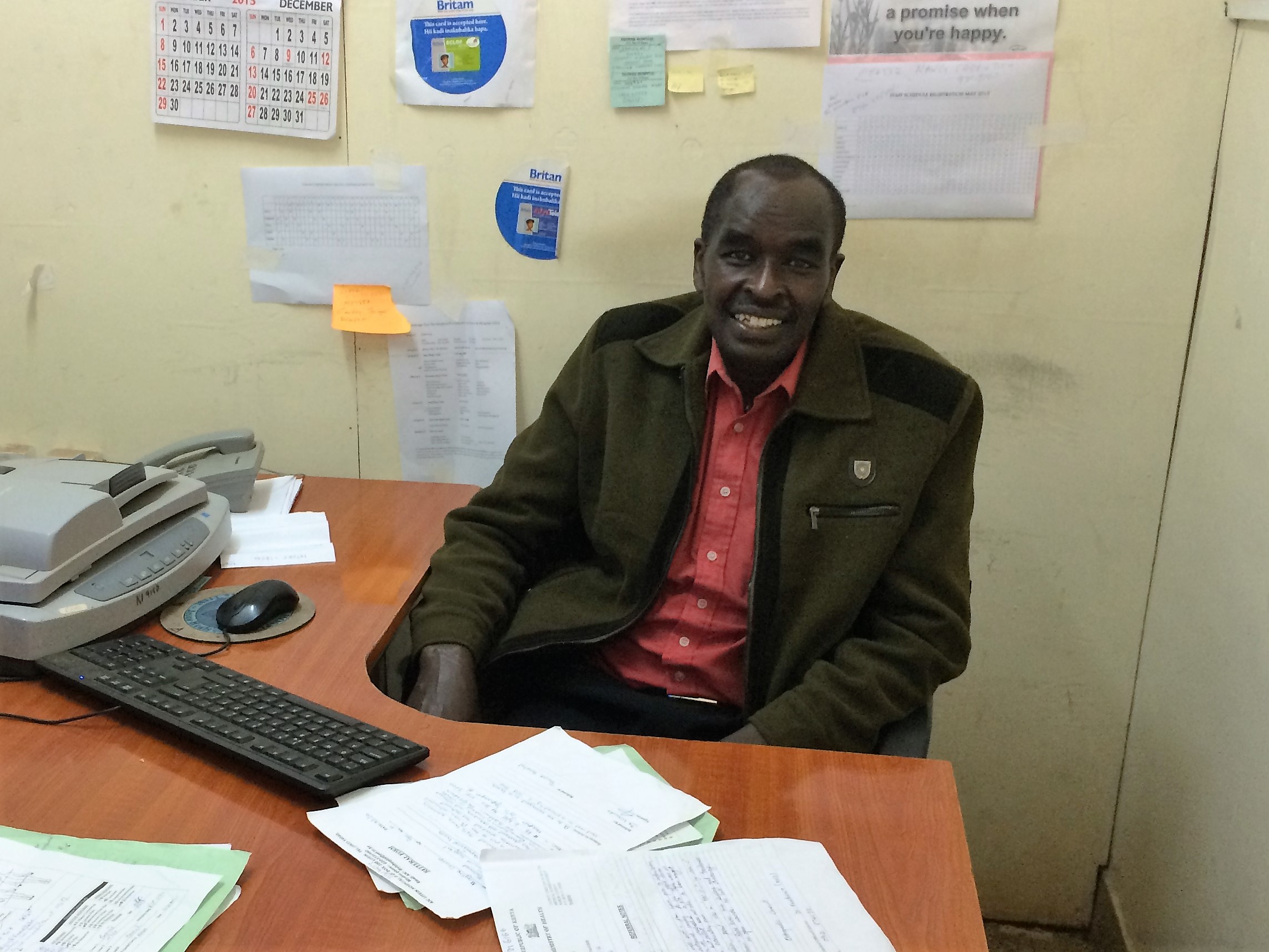
Andrew is back to work in full capacity, serving God and the patients of Tenwek Hospital, preaching and pastoring his church. He returned with many celebrations and opportunities for testimony of the healing of God in his life. And I am certain God is not through using Andrew’s story, and Andrew has given permission for us to use his pictures and tell his story. There is no question that Andrew’s recovery was miraculous. And while God didn’t need any of us to work a miracle, he used a vast network of us, from the local community that was joined in prayer, to the nurses and hospital staff who cared so diligently for him, to the surgical residents, to physical therapists, to radiologists and neurosurgeons thousands of miles away who looked at CT scans and helped advise. I still don’t understand the nature of prayer or miracles. But, I do know that a loving God beautifully orchestrated an intersection of faith and science to bring about healing for Andrew.
Organizations related to this story:
Tenwek Hospital/World Gospel Mission
,
Samaritan's Purse



